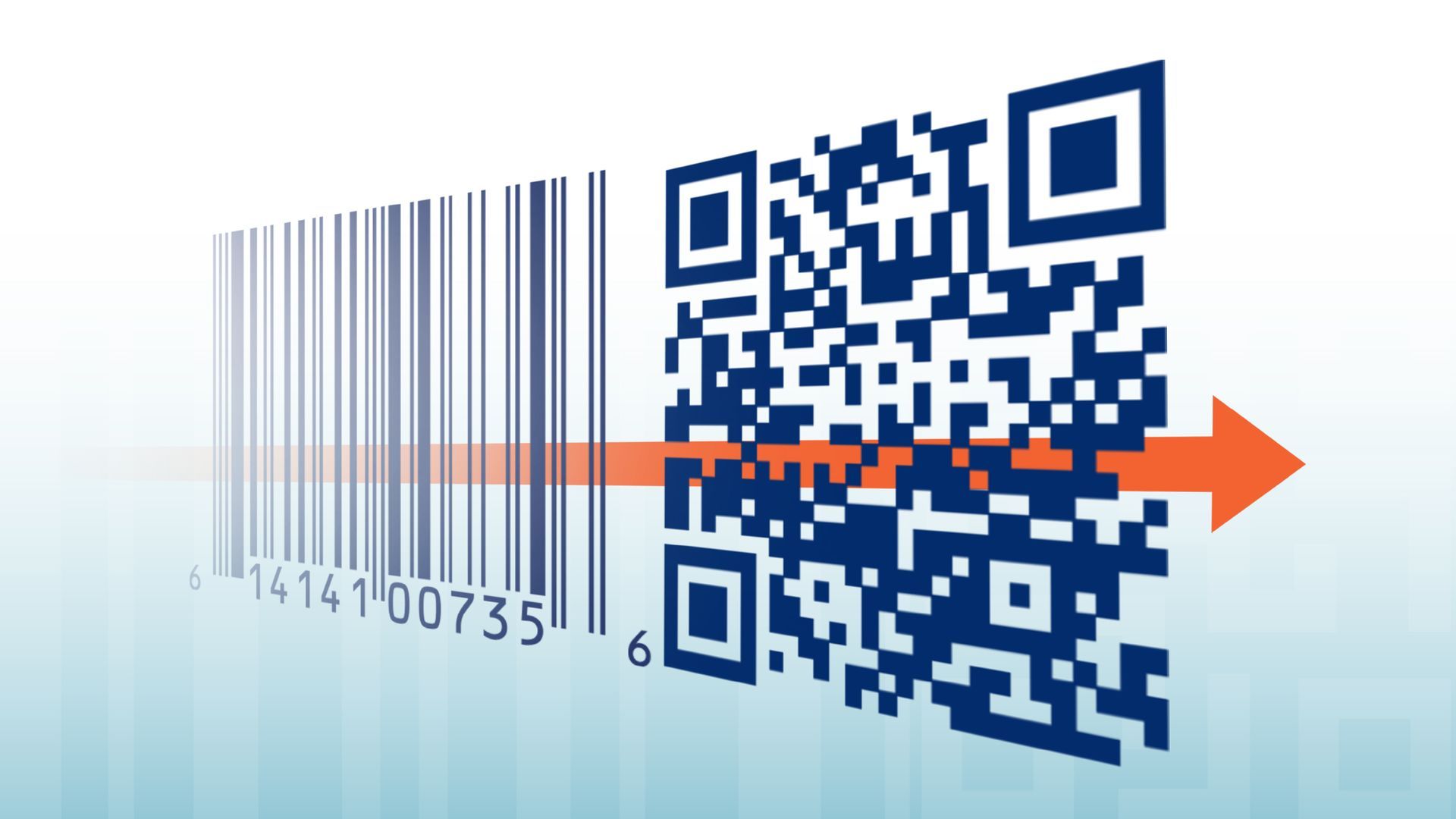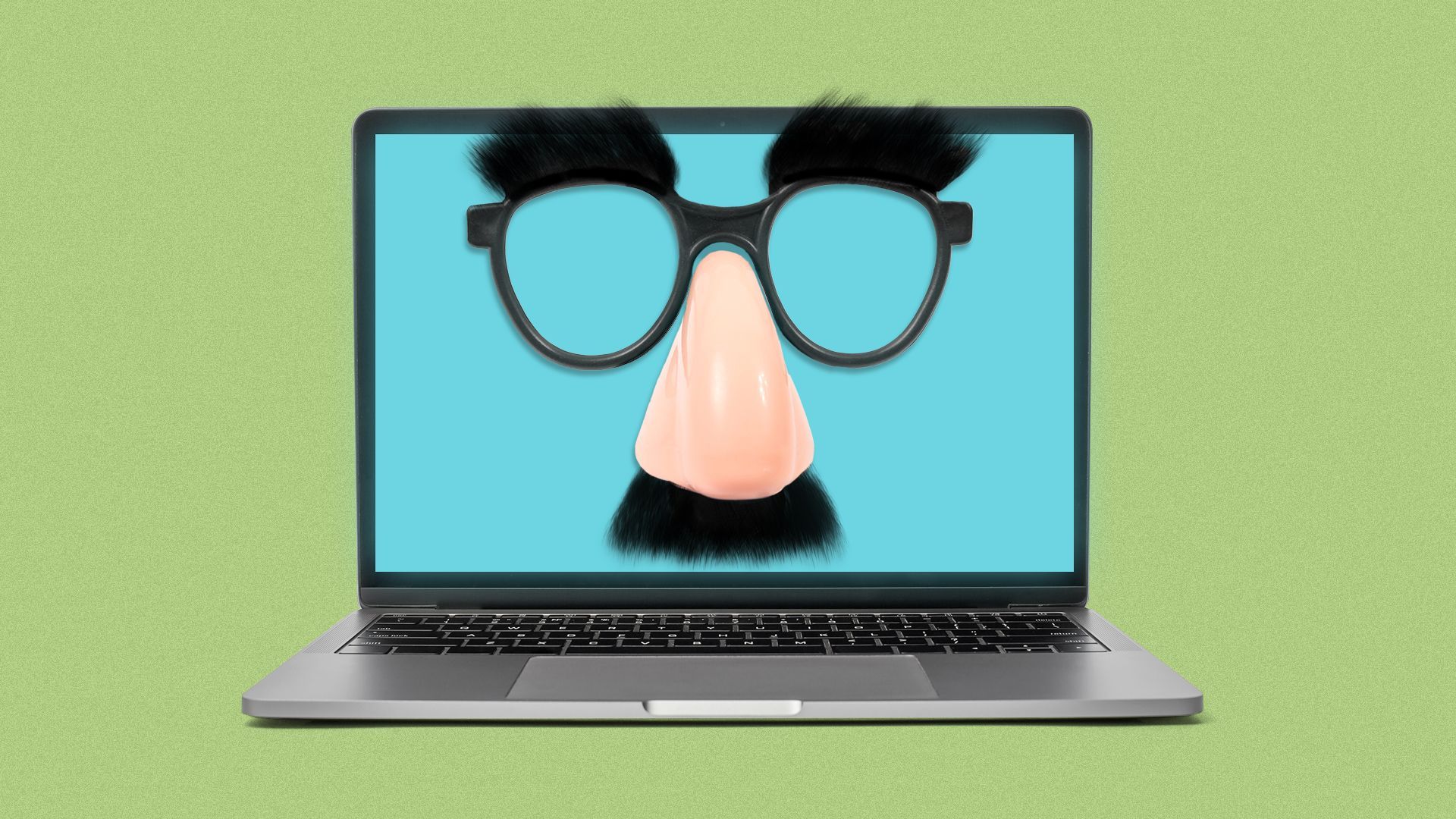April 17, 2023
A new, high-tech barcode will have benefits for shoppers and retailers alike, Jennifer reports today.
Today's newsletter is 1,149 words ... 4½ minutes.
1 big thing: The barcodes of the future

The familiar Universal Product Code barcode, left, will be supplanted by 2027 with a more data-rich improvement, the 2D barcode, at right. Image courtesy of GS1
The humble and familiar barcode will soon be replaced with a more robust and muscular successor that offers far more information about the product inside, Jennifer A. Kingson reports.
- The new "2D" barcodes will unlock reams of online extras (for consumers) and revolutionize inventory management (for retailers).
- Scanning them may tell us the field where something was grown, the factory where a garment was sewn, the sustainability practices of the company that made it — or the washing instructions.
Why it matters: The technology promises to improve product safety, give us greater transparency into the origins of the items we buy, and enhance our lives with handy suggestions about how to use or prepare our purchases.
- Stores will be able to respond immediately to product recalls, identifying faulty items and removing them from shelves.
- They'll be able to flag foods that are approaching their sell-by date — and offer discounts before they expire.
- Consumers will gain online access to a trove of useful data — everything from ingredients, recipes and potential allergens to promotional offers and information about how to recycle the product.
Driving the news: In a worldwide push called "Sunrise 2027," the retail industry is transitioning from the standard 12-digit barcode to a two-dimensional web-enabled version.
- The effort is being orchestrated by GS1 US, the nonprofit standards organization that oversees the barcode world.
- By 2027, only the 2D barcodes will be accepted at registers globally.
How it works: In contrast to the lowly UPC barcode, the 2D upgrades will "take you on an experience that the brand wants you to have," says Carrie Wilkie, SVP of standards and technology at GS1 US.
- Products will still scan the same way at the cash register, but the souped-up barcodes will open up a world of real-time frills — such as loyalty points, games and coupons.
- We grew familiar with one type of 2D barcode during the COVID-19 pandemic: QR codes, which are now ubiquitous gateways to restaurant menus.
On the back end, stores expect huge improvements in inventory control to spring from the 2D upgrades.
- "As brands and retailers make more investments in AI and robotics, they need that in a machine-readable format," Wilkie tells Axios.
Where it stands: Puma is the first company to announce that it's using 2D barcodes in its U.S. stores and products, Wilkie said.
- Those codes link to information about Puma's sustainability efforts and the materials in the sneakers you're buying.
- Internationally, 2D barcodes are being used in Australia and New Zealand for freshness information about deli and meat products.
- In Japan, a retailer is using them to do "on-demand discounting" of foods with fewer than three days of remaining shelf life.
What's next: GS1 US just released a "barcode capabilities test kit" to help retailers evaluate their readiness for the 2D transition.
- We can expect to start seeing more products printed with 2D barcodes (or both types, as the transition moves forward) fairly soon.
2. An AI companion for your dog

The Companion smart device is meant to entertain dogs while monitoring their health. Photo courtesy of Companion
A new smart device called Companion bills itself as an all-in-one nanny/tutor for your dog, Jennifer reports, stimulating and entertaining Fido all day.
Why it matters: The humanization of dogs continues apace, as Americans treat the pooches they adopted during the pandemic like fur babies and happily spend crazy money on them.
Driving the news: Companion just started taking reservations for its $49-a-month device, which is scheduled to start shipping in May 2024.
- The stationary device — which dispenses treats — "provides all day scheduled and on-demand engagement for your dog with games, behavioral programs and training," the company says.
- It simultaneously monitors your dog's health, looking for "sudden or subtle shifts in your dog's movement or posture that can indicate pain, anxiety or stress."
How it works: The device uses "AI hardware, machine learning and best-in-class positive reinforcement techniques," Companion says.
- For instance, by playing commands like "sit" using an owner's voice, the Companion teaches the dog obedience. (See a video here — scroll down to "mission and vision.")
What they're saying: "Every dog in the U.S. could benefit from more enrichment," John Honchariw, the CEO and founder of Companion, tells Axios.
- Honchariw developed Companion for his rescue dog Boomer, a beagle-dachshund mix.
- "He loves it, and it's his all-day play buddy," he says. "He eats 100% of his dog food through the device, so for him, it's like the world's most advanced food puzzle."
The big picture: Companies are selling more products that cater to our interest in treating animals like children — witness the Joipaw video game system for dogs or the trend toward human-grade dog food.
- Total spending in the pet care industry is expected to increase to $277 billion by 2030, 134% higher than 2019 levels, per Morgan Stanley.
3. Beware AI-driven tax scams

Illustration: Aïda Amer/Axios
Generative AI programs such as ChatGPT have been a new wild card during this year's tax filing season, Axios' Peter Allen Clark reports.
Driving the news: The IRS' "2023 Dirty Dozen list" includes gambits such as made-up pitches about pending large refunds, phishing emails trying to get personal information, and fraudulent advice from social media accounts.
- Every one of these deceptions could get a boost from the verbally skilled new wave of AI.
It's too early to know how widespread these kinds of attacks have been this tax season. But we're in for a scam explosion sooner or later, experts tell Axios.
- "ChatGPT and other similar generative AI engines allow cybercriminals to easily craft phishing emails on any subject with the click of a mouse, including tax-related scams," says Sergey Shykevich, threat intelligence group manager at Check Point Research.
Yes, but: The companies developing the quickly evolving AI tech could impose firmer guardrails to limit malicious-use cases.
The bottom line: "People should be wary and avoid sharing sensitive personal data over the phone, email or social media to avoid getting caught up in these scams," IRS commissioner Danny Werfel said in a release.
4. Extra help for travelers with hidden disabilities

People await baggage at the Austin airport. Photo courtesy of AUS
Austin-Bergstrom International Airport has launched a new service intended to ease travel for people with non-visible disabilities, Axios' Asher Price reports.
Why it matters: Travel can be especially challenging for people with a range of non-visible disabilities, including autism, anxiety disorders, dementia and Crohn's disease, among others.
How it works: Passengers (or their companions) with non-visible disabilities can order a special lanyard to wear around their neck while at the airport.
- The lanyard — green with sunflowers — works as a discreet visual cue to indicate to airport staff and other passengers that the wearer (or someone with them) has a non-visible disability and may need a little more time, support or assistance.
What they're saying: "It's our responsibility to provide services that support every passenger," Ramonika Carr, the airport's guest services division manager, said in a statement.
The big picture: The Hidden Disabilities Sunflower Lanyard Program is an internationally recognized effort that launched in 2016 in the United Kingdom.
Big thanks to What's Next copy editor Amy Stern.
Was this email forwarded to you? Get your daily dose of What's Next by signing up here for our free newsletter.